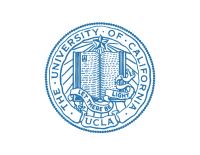Mayank Jog1, Cole Anderson1, Elizabeth Kim1, Antoni Kubicki1, Michael Boucher1, Gerhard Hellemann2, Roger Woods1, and Katherine Narr1
1UCLA, Los Angeles, CA, United States, 2University of Alabama, Birmingham, Birmingham, AL, United States
1UCLA, Los Angeles, CA, United States, 2University of Alabama, Birmingham, Birmingham, AL, United States
In this randomized double-blind study, gray-matter increases post-tDCS treatment were observed in the active-stimulation group (compared to placebo) near the stimulation-target, and in a distant but functionally-connected brain region.

Figure 2: MRI measurements of gray matter changes induced by tDCS: A voxelwise 1-way ANOVA revealed significant (p < 0.05, FDR corrected) differences between the Sham, Active-Conventional and Active-HD groups in the left dorsolateral prefrontal cortex (DLPFC) and the posterior cingulate cortex (PCC). Post-hoc t-tests revealed significant (p<0.05) gray matter increases with the active-HD montage (relative to Sham) in both regions, but only in the left DLPFC with the active-conventional montage.

Figure 1: Study design: Fifty-nine moderately depressed participants were randomized into Active/Sham X HD/Conventional groups using a double-blind, parallel design (n=20/19/20 in Active-HD/Active-Conventional/Sham groups respectively). Each participant received tDCS treatment from the High definition (HD) or Conventional montages, according to the allocation. Treatments were administered using a double-blind device (for details about tDCS treatments, see abstract text).
